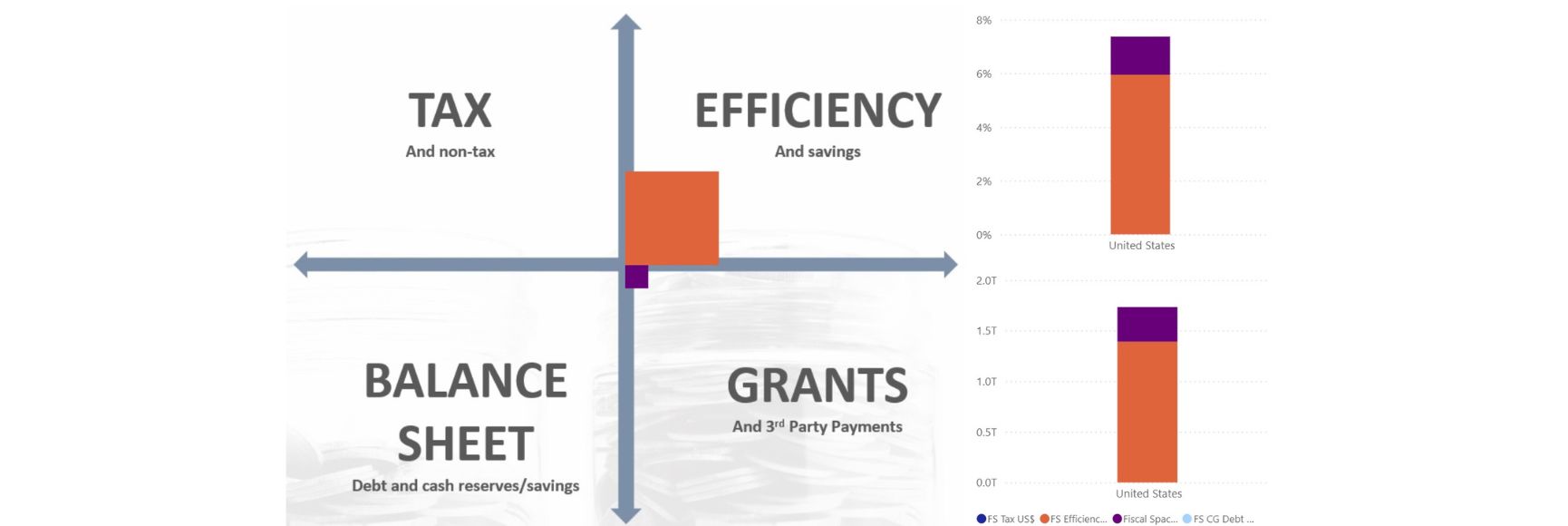
Posted by Felipe Bardella[1]
Brazil released its 2018 fiscal outturn on January 31st. The federal government’s primary fiscal deficit declined to 1.6 percent of GDP, representing the second annual drop since the peak of 2.5 percent recorded in 2016. The overall deficit has also steadily declined in the last three years, from 8.6 percent of GDP in 2015 to 6.2 percent in 2018.
Although the overall fiscal position is still challenging, these positive recent outcomes reflect important PFM reforms undertaken in the country. Taking advantage of continuous technical support from the IMF[2], Brazil has introduced several new initiatives.
New Expenditure Rule
A constitutional rule to maintain expenditure constant in real terms was introduced in December 2016 as a key element for restoring fiscal sustainability. The expenditure rule was designed to complement the primary balance rule that has been in place for 18 years.
The new rule triggered significant changes in budget practices (preparation, approval and execution) that have led to improvements in expenditure control and cash management.
Budget preparation and approval
- An important weakness of previous practice was that the parliament could modify any element of the budget proposal submitted by the executive branch. During the legislative debate, revenue forecasts used to be optimistically revised upwards by the parliament to accommodate additional expenditures.
- Under the new arrangements, the approved budget must comply with the expenditure limits established by the constitutional rule. This change has enhanced budget credibility, setting the scene for more orderly budget execution and control.
Budget execution, expenditure control and cash management
The budget department exerts an active control of budget execution by setting, at the beginning of each fiscal year, commitment ceilings to limit the line ministries’ spending plans. These ceilings are enforced through a presidential decree, which also contains binding cash plans from the treasury department. Both commitment ceilings and cash plans are revised every two months and published together in a bimonthly expenditure and revenue report (jointly produced by the treasury and the budget departments). The presidential decree is updated accordingly.
Previously, unrealistic budget plans – associated with the fact that compliance with the primary balance rule was measured on a cash basis only (not considering outstanding commitments) – led to an historical lack of coordination between commitment ceilings and cash plans. Commitment ceilings used to be more generous than cash disbursements, resulting in some degree of cash rationing and the accumulation of arrears and unpaid commitments (the stock of which reached 4 percent of GDP in 2015).
The new arrangements apply the same constitutional limits to voted appropriations, commitment ceilings and payments, thus enhancing the control of spending commitments and preventing the accumulation of arrears (which declined to 2.4 percent of GDP in 2018).
Fiscal transparency and accountability
The improvements just described were supported by sound transparency initiatives and strong accountability checks.
- Previously, fiscal reports focused mainly on cash plans and cash flows, and did not emphasize the commitment ceilings and accumulated arrears. There was limited external oversight of in-year fiscal forecasts and budget execution.
- Under the new arrangements, the treasury’s monthly report[3] starts with a discussion of adherence to the expenditure rule and the primary balance rule. The bimonthly expenditure and revenue reports[4] discuss how both rules will be met after considering updated fiscal projections and sequestration (expenditure cuts) decisions. The structure and the presentation of both reports have been aligned to ensure better communication of information to the public. In addition, Brazil’s court of accounts (its supreme audit institution) has tightened oversight of the in-year expenditure cycle by exercising closer and more timely scrutiny of the commitment ceilings and cash plans.
Reporting against the fiscal targets at key stages of the expenditure cycle (appropriation, commitment, payment) has improved the fiscal debate and allowed for more vigilant external oversight. Decisions on in-year revisions to fiscal forecasts (including macroeconomic parameters), commitment ceilings and cash plans are now taken by formal committees involving the treasury and budget departments. Minutes of meetings are subject to scrutiny by the court of accounts, decisions must be supported by technical notes, and civil servants take responsibility for technical aspects of such decisions. This approach has contributed to a reduction in the political influence over fiscal forecasts.
PFM reform efforts need to be sustained
These reforms have contributed to enhanced fiscal performance and better management of public finances in Brazil in the short run. However, restoring medium-term fiscal sustainability will require further efforts to implement structural reforms on both the expenditure and revenue sides. For example, modernizing the social security system and reviewing indexation rules within certain mandatory expenditures are essential if the constitutional expenditure limits are to be complied with in the years ahead and the requirements for fiscal consolidation are to be met.
[1] Felipe Bardella is a Technical Assistant Advisor in the IMF's Fiscal Affairs Department (FAD). Before January 2019, he was head of the Fiscal Studies Department at the Brazilian Treasury.
[2] A Fiscal Transparency Evaluation (https://blog-pfm.imf.org/pfmblog/2017/06/brazils-efforts-to-improve-fiscal-transparency.html), support on the implementation of an expenditure rule (https://blog-pfm.imf.org/pfmblog/2017/10/by-fabian-bornhorst-and-teresa-curristine1-brazil-is-emerging-from-a-deep-recession-while-the-country-is-expected-to-regist.html) and a Public Investment Management Assessment (https://blog-pfm.imf.org/pfmblog/2018/12/-making-brazil-public-investment-more-efficient.html).
[3] http://www.tesouro.fazenda.gov.br/resultado-do-tesouro-nacional
[4] http://www.planejamento.gov.br/assuntos/orcamento-1/informacoes-orcamentarias/relatorios-de-avaliacao-fiscal
Note: The posts on the IMF PFM Blog should not be reported as representing the views of the IMF. The views expressed are those of the authors and do not necessarily represent those of the IMF or IMF policy.





